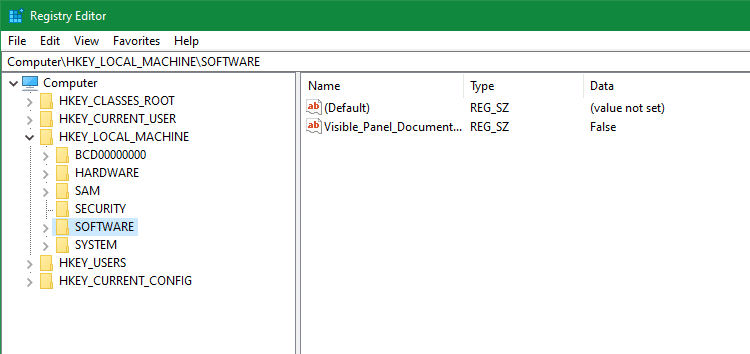If you’re familiar with Windows, you’ve probably heard references to the Windows Registry before. This is an important part of the operating system, but what it doesn’t isn’t exactly clear.
Let’s take a look at what the Windows Registry is and what you should know about it.
What Is the Registry in Windows?
The Windows Registry is a huge database of information that both Windows itself and apps on your PC use. It contains hundreds of thousands of entries and changes all the time when you make changes to Windows settings, install or remove software, and similar.
In the early days of Windows, Microsoft created the registry as a place to store configuration information that programs needed, as it was more centralized than the old methods of storing them in various files. Nowadays, software can use the registry to store this information if they want, but it’s not necessary.
How Can I Access the Registry?
It’s possible to view and make changes to the registry using the Registry Editor utility in any version of Windows. However, as a normal user, it’s almost never necessary to open this.
While you can tweak registry items to add more customization to Windows, it’s not a good idea to go into the registry and poke around if you don’t know what you’re doing. By changing or deleting the wrong keys, you could cause major problems—some errors could even require you to reinstall Windows due to serious damage.
Generally, on Professional and enterprise versions of Windows, system administrators won’t make changes to the registry directly. Instead, they use Group Policy, as part of a Windows domain, to write policies that apply to the relevant computers and users.
Do I Need to Clean the Registry?
While they aren’t as common as they used to be, you might still see advertisements for registry cleaners online. These claim to scan your computer, find problems in the registry, and then clean up unnecessary registry items to make your computer run faster.
In reality, registry cleaners are completely unnecessary. This is for a few key reasons.
First, registry cleaners are almost never free. They advertise a “free scan,” but then want to charge you to remove more than a few of the “problems” they find. And as we’ll see, because the “service” they provide is nonsense, paying for them is a waste of money. The below video shows an example of such software:
Second is that the registry doesn’t need to be cleaned like other parts of your computer do. While you might have unused registry entries left over from uninstalled software and similar, even cleaning several hundred of these from the registry will not have an effect on your computer’s performance. They are tiny in size, so it won’t free up any disk space, either.
Finally, using a registry cleaner can cause serious problems. Because these cleaners run automated scans, there’s a chance that they’ll mark an important item as junk. If you blindly trust the registry cleaner and delete what it recommends, you could end up corrupting your system because you deleted an important value.
Microsoft explicitly advises against using any kind of registry cleaner. Chances are that if Microsoft thought they were worth using, it would include its own registry cleaner tool in Windows. While Microsoft offered a registry cleaner decades ago, it’s been discontinued and unavailable for a long time.
In summary, registry cleaners do nothing of value. Any “cleaning” they do is imperceptible to system performance, and they have a better chance of damaging your system than helping it.
Understand the Windows Registry
Now you know the basics of what the registry is for and why you don’t need to both with cleaning programs. The registry is an important backbone of Windows, but it’s not something you need to worry about except in specific cases.
For ways to get more out of Windows, have a look at some useful features of the Windows 10 Settings menu.

